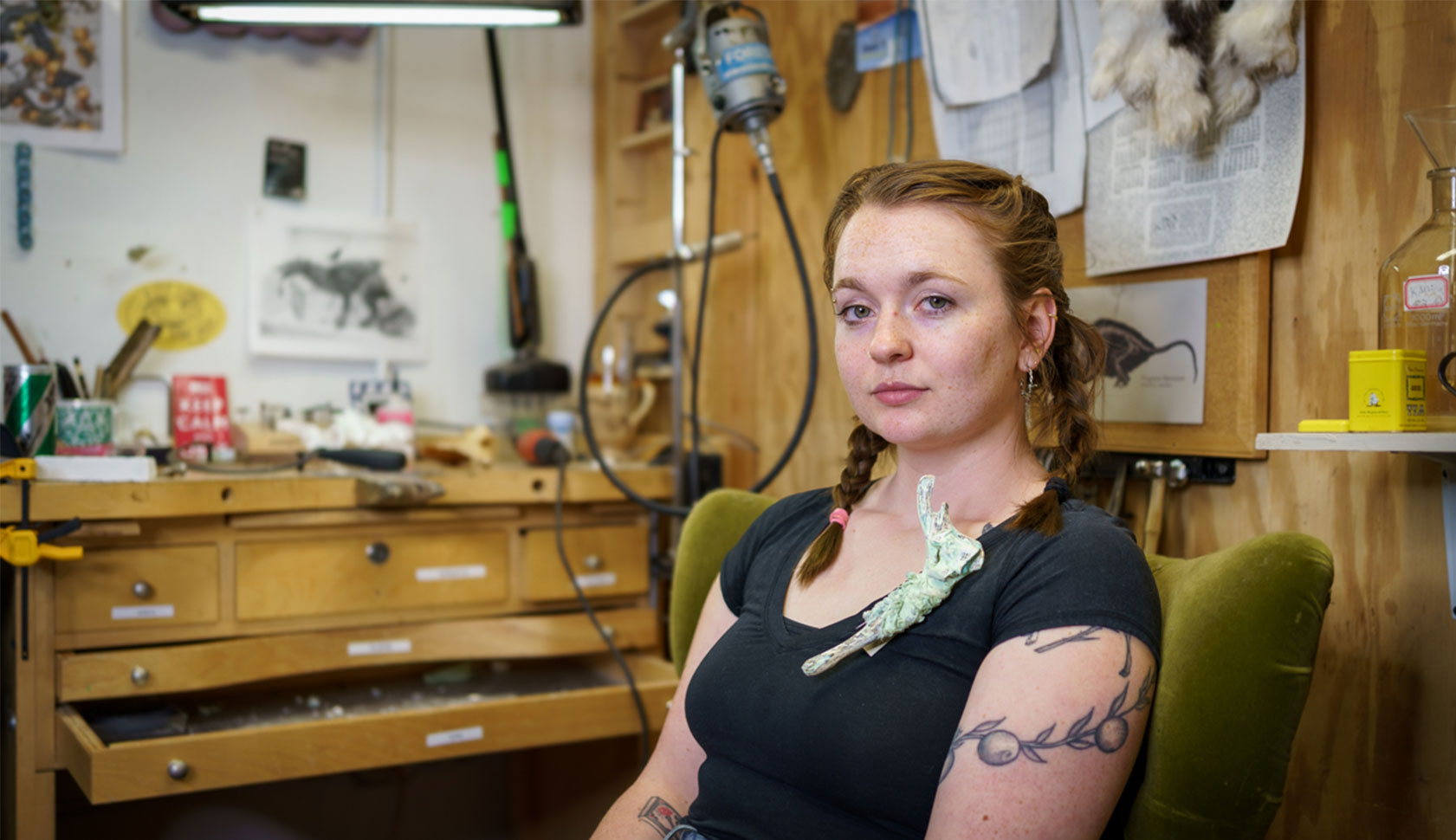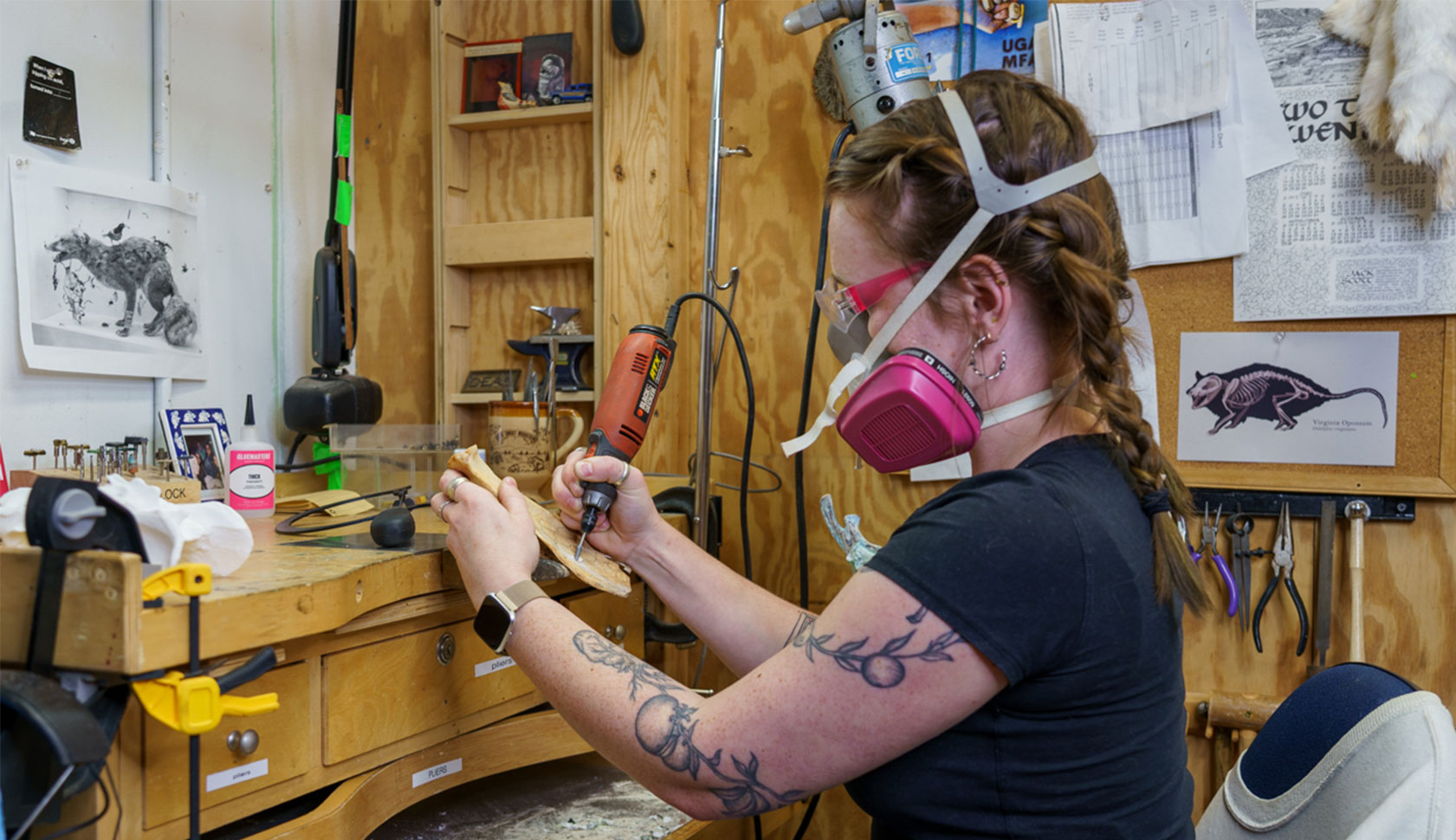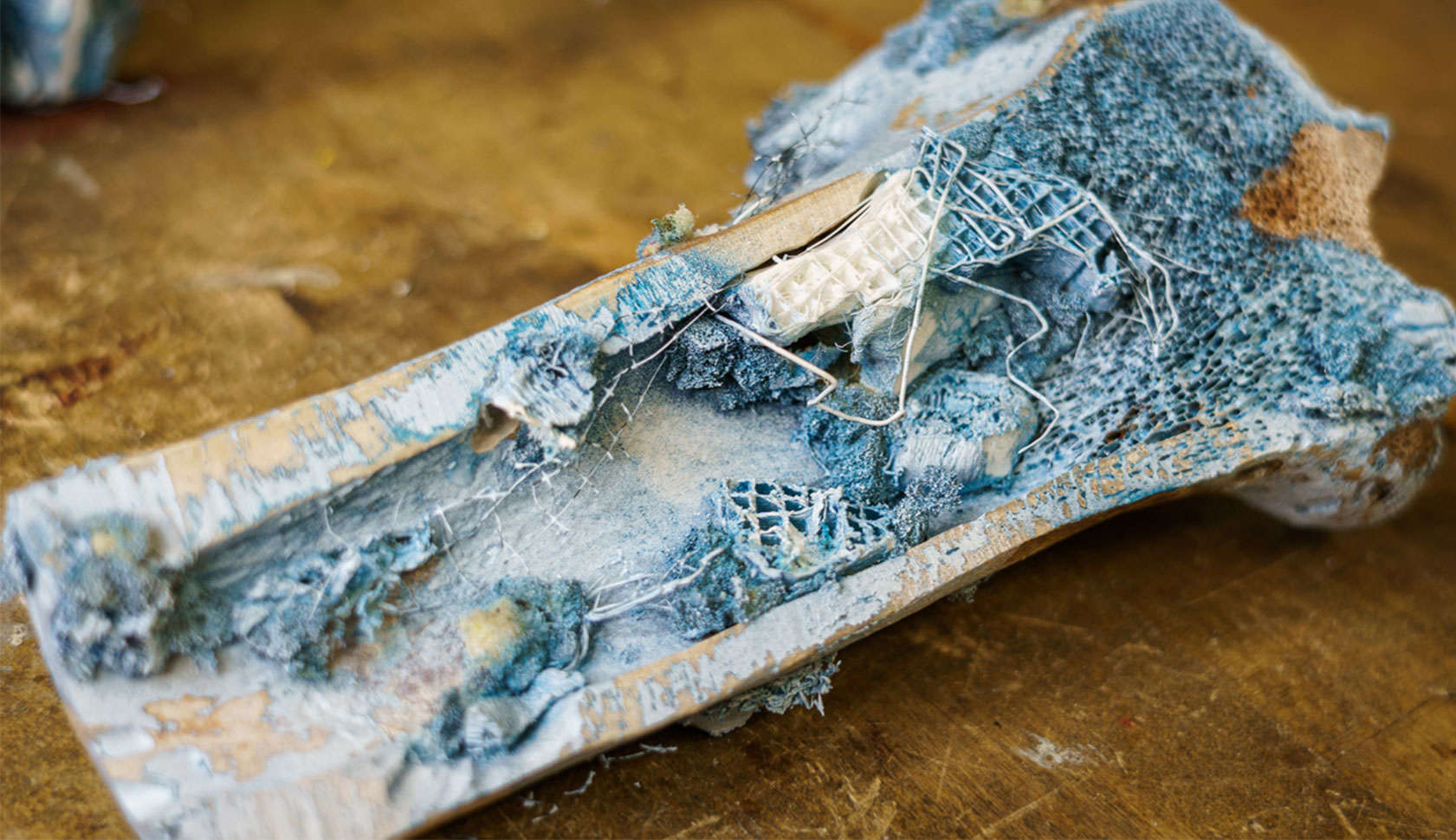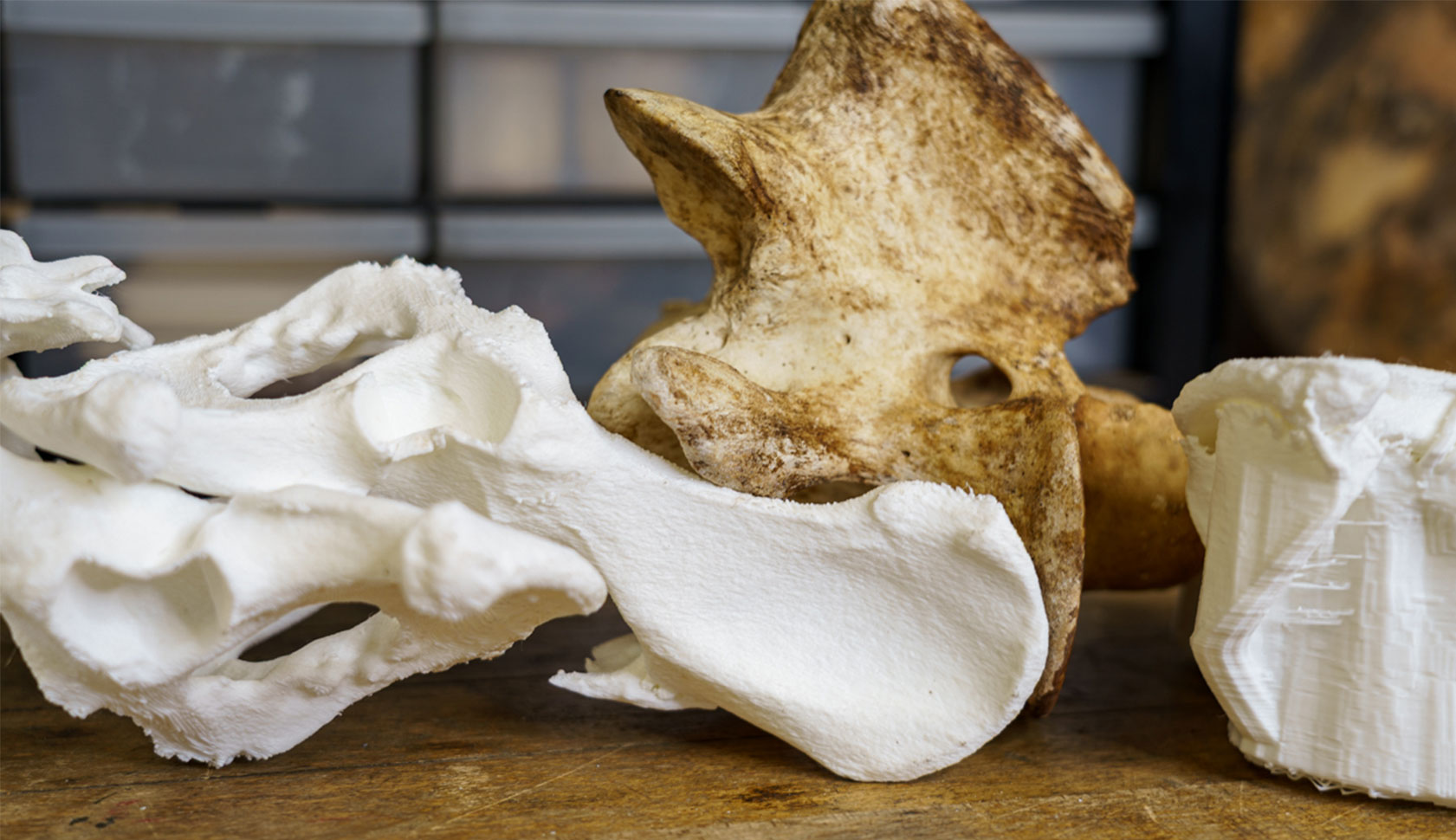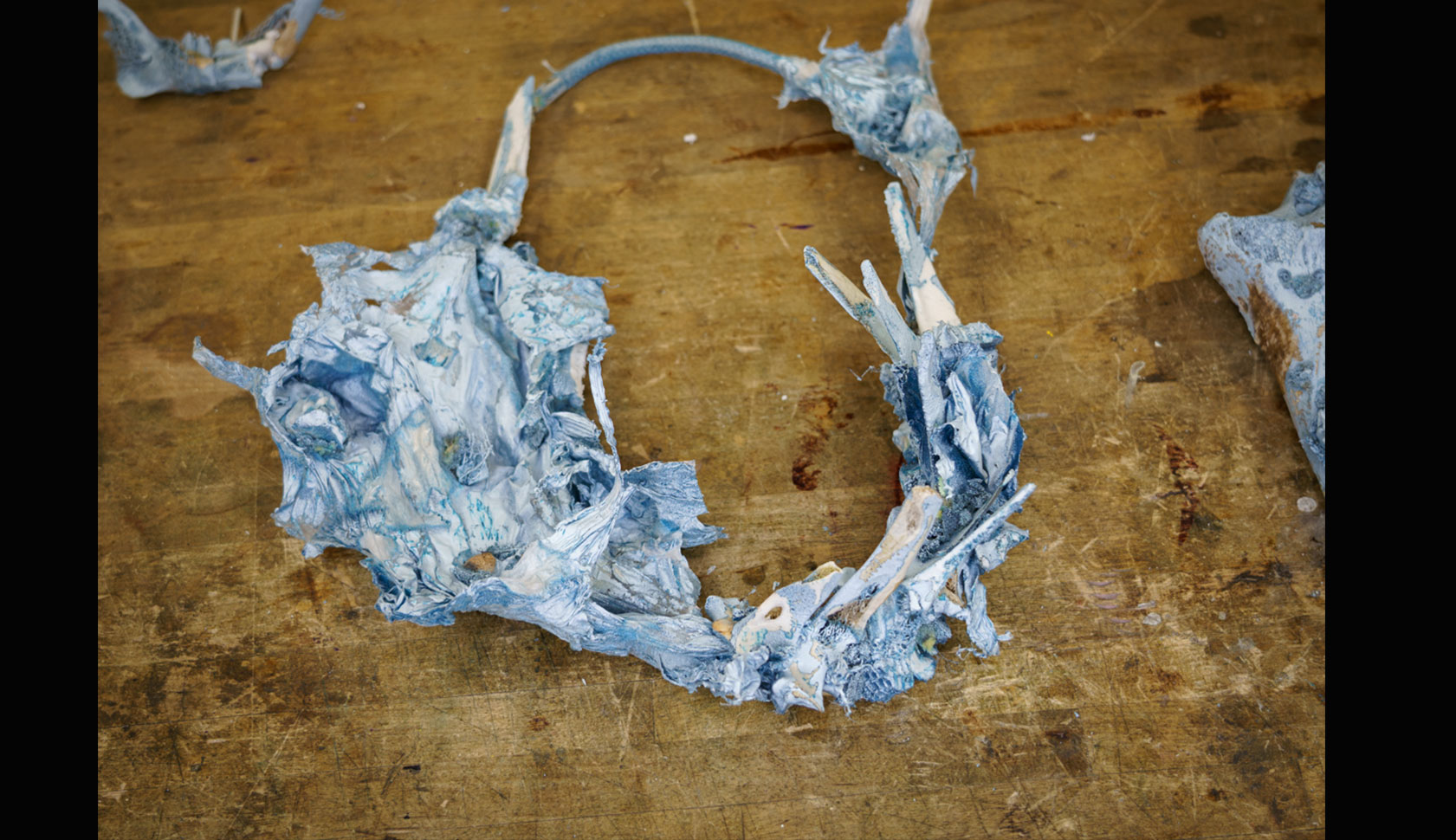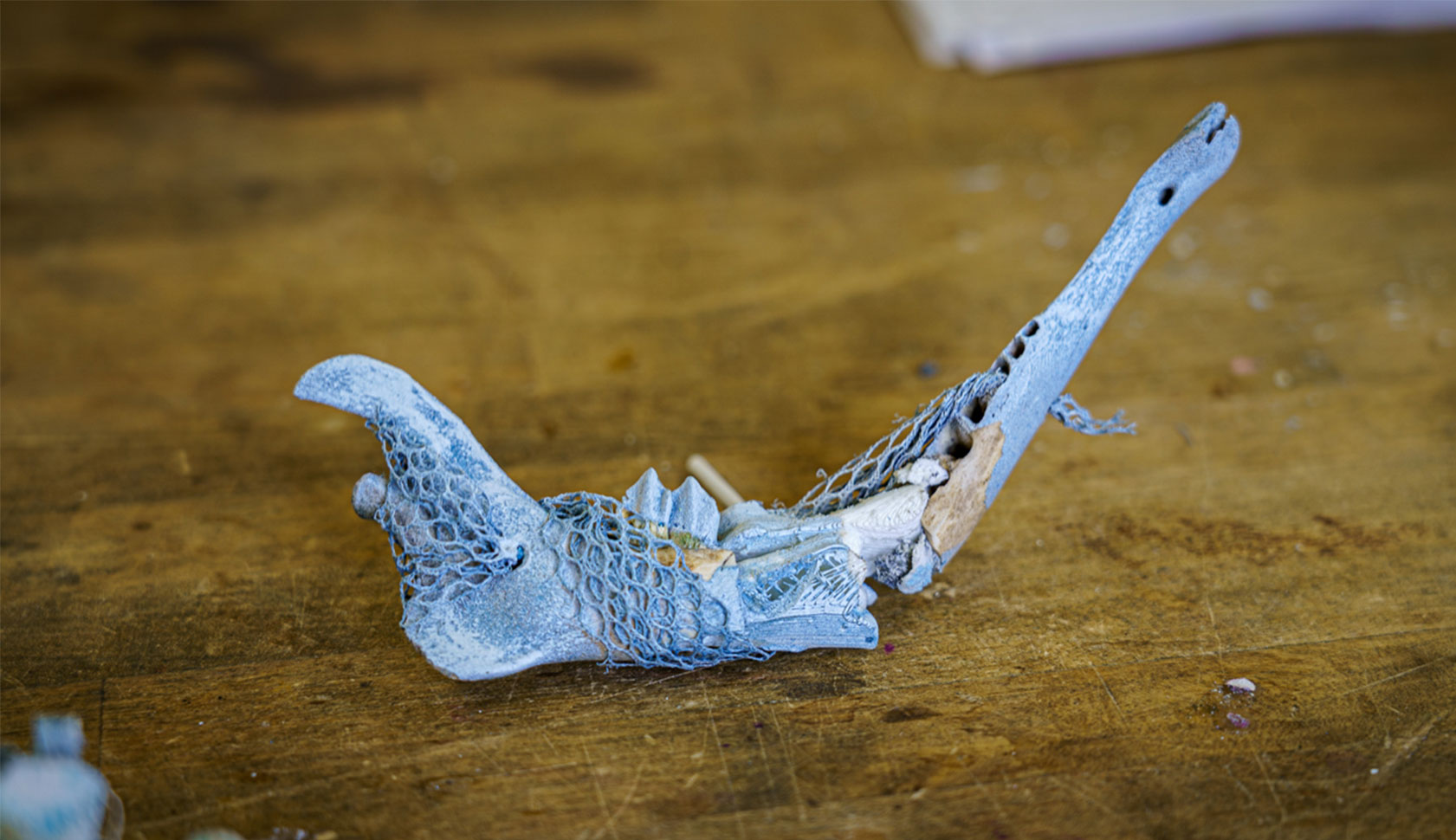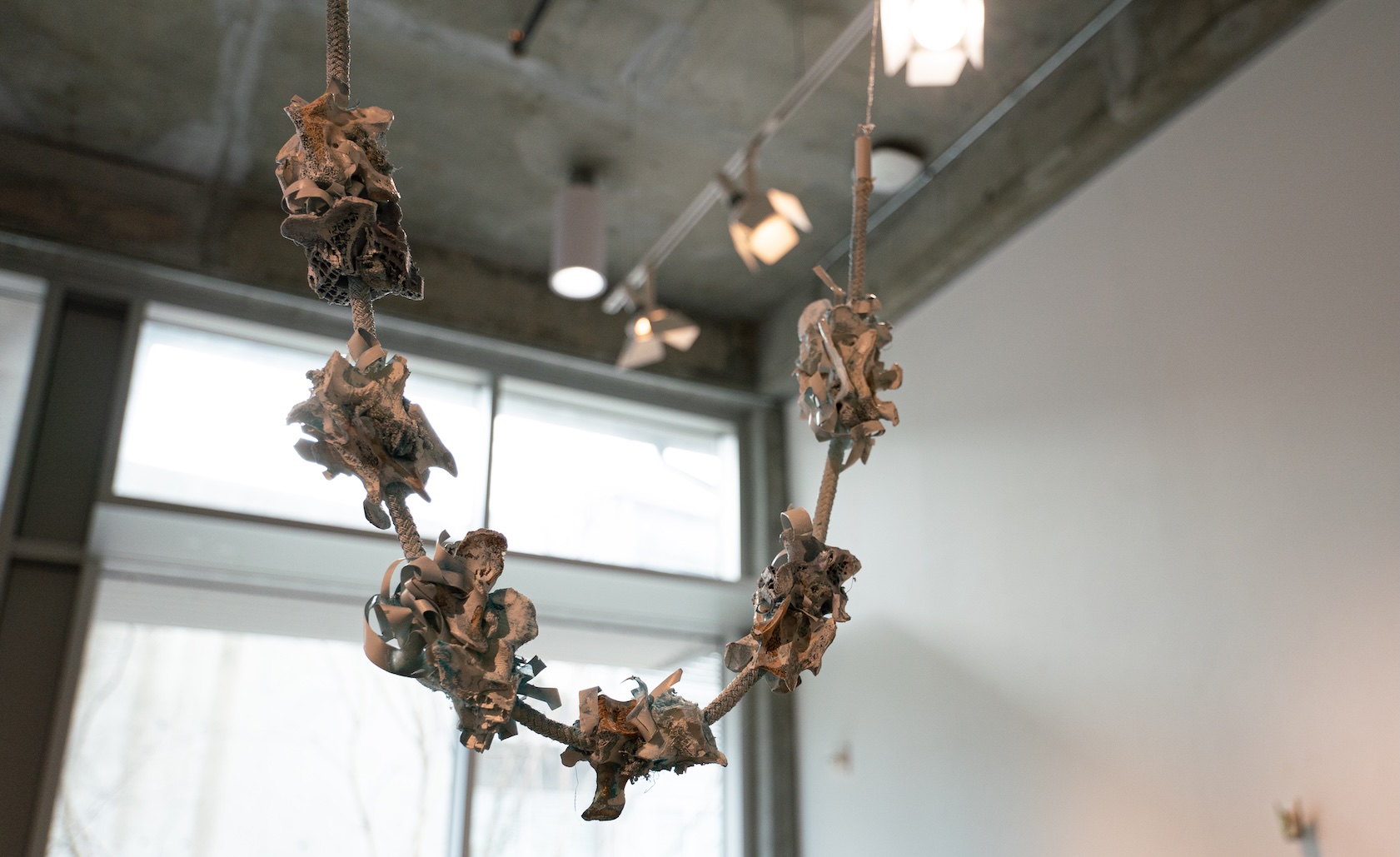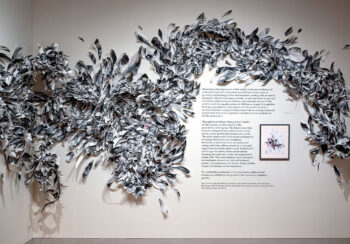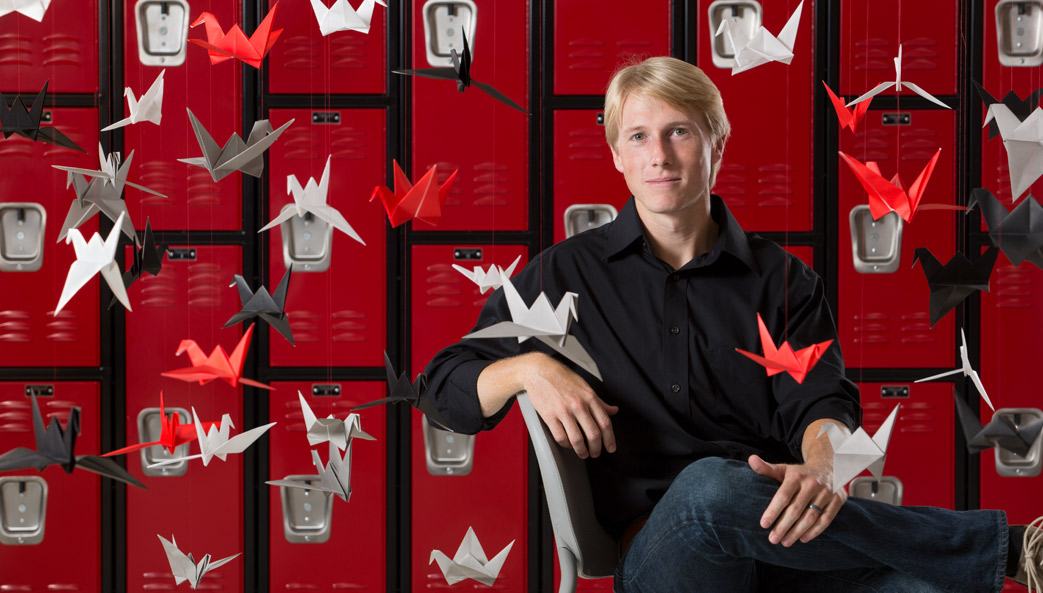Larissa McPherson has a bone to pick. Literally.
While most people ignore rotting roadkill alongside the highway, McPherson seeks it out. If it’s decayed enough, she’ll collect the unsightly artifacts and transport them to a makeshift burial ground in her friends’ yards.
Why?
McPherson is a master’s student in the Lamar Dodd School of Art with a focus on jewelry and metalworks. She incorporates natural elements into her works, things like leaves and feathers, or her favorite: bones.
“I’ve always really loved bones and collecting bones. I really like the way they’re formed, but I also love how it’s also the only thing that’s left after life and death,” she said.
McPherson works at the Georgia Natural History Museum, where she uses 3D printers to scan bones from their collection. In some cases, the museum has let her take materials that weren’t being used for research or display to incorporate into her work. With support from the Willson Center for Humanities and Arts, McPherson visitied the Smithsonian Institution to scan their amphibian and reptile bone collection, as well.
“Here, I mostly work with mammals, so this gave me a new direction,” she said. “Some of the bones are a lot more fragile and smaller, and the texturing is also different.”
Her most recent work focuses on the pervasive threat of microplastics and how synthetic materials invade the bodies of animals and humans alike.
This fall, McPherson will start a directed study program with College of Engineering’s Jenna Jambeck to learn more about how plastics affect environments, specifically marine environments.
“Bone is something that’s going to be the last thing left—and plastic is similar in that it doesn’t degrade the same way as flesh,” she said.



